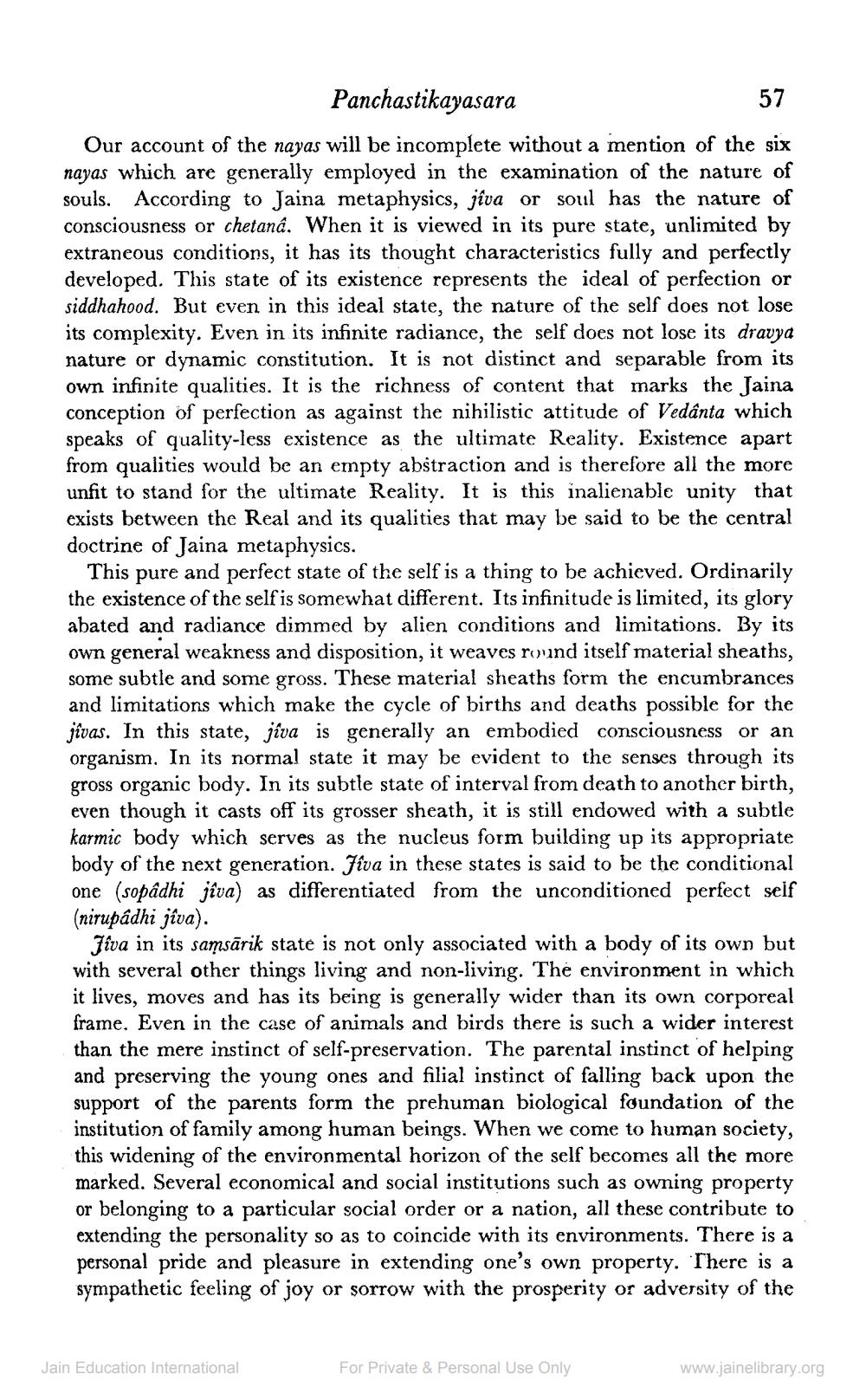________________
Panchastikayasara
57 Our account of the nayas will be incomplete without a mention of the six nayas which are generally employed in the examination of the nature of souls. According to Jaina metaphysics, jîva or soul has the nature of consciousness or chetana. When it is viewed in its pure state, unlimited by extraneous conditions, it has its thought characteristics fully and perfectly developed. This state of its existence represents the ideal of perfection or siddhahood. But even in this ideal state, the nature of the self does not lose its complexity. Even in its infinite radiance, the self does not lose its dravya nature or dynamic constitution. It is not distinct and separable from its own infinite qualities. It is the richness of content that marks the Jaina conception of perfection as against the nihilistic attitude of Vedanta which speaks of quality-less existence as the ultimate Reality. Existence apart from qualities would be an empty abstraction and is therefore all the more unfit to stand for the ultimate Reality. It is this inalienable unity that exists between the Real and its qualities that may be said to be the central doctrine of Jaina metaphysics.
This pure and perfect state of the self is a thing to be achieved. Ordinarily the existence of the self is somewhat different. Its infinitude is limited, its glory abated and radiance dimmed by alien conditions and limitations. By its own general weakness and disposition, it weaves round itself material sheaths, some subtle and some gross. These material sheaths form the encumbrances and limitations which make the cycle of births and deaths possible for the jîvas. In this state, jîva is generally an embodied consciousness or an organism. In its normal state it may be evident to the senses through its gross organic body. In its subtle state of interval from death to another birth, even though it casts off its grosser sheath, it is still endowed with a subtle karmic body which serves as the nucleus form building up its appropriate body of the next generation. Jiva in these states is said to be the conditional one (sopâdhi jîva) as differentiated from the unconditioned perfect seif (nirupâdhi jiva).
Jiva in its samsarik state is not only associated with a body of its own but with several other things living and non-living. The environment in which it lives, moves and has its being is generally wider than its own corporeal frame. Even in the case of animals and birds there is such a wider interest than the mere instinct of self-preservation. The parental instinct of helping and preserving the young ones and filial instinct of falling back upon the support of the parents form the prehuman biological foundation of the institution of family among human beings. When we come to human society, this widening of the environmental horizon of the self becomes all the more marked. Several economical and social institutions such as owning property or belonging to a particular social order or a nation, all these contribute to extending the personality so as to coincide with its environments. There is a personal pride and pleasure in extending one's own property. There is a sympathetic feeling of joy or sorrow with the prosperity or adversity of the
Jain Education International
For Private & Personal Use Only
www.jainelibrary.org




